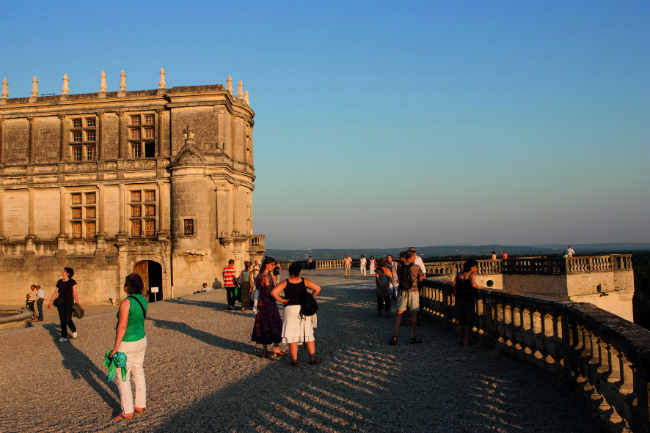Slow Tourism in the South of France: Explore the Drôme and Vaucluse
If you want a leisurely holiday with plenty of scope for exploring France’s culinary treasures, Stephen Davy-Osborne suggests heading for the Drôme and Vaucluse départements to sample their delights at a slower pace
No walking boots are required to reach the summit of the historic Hermitage appellation overlooking the winding River Rhône. At the top you’ll spy the craggy mountains of the Ardèche, which attract thousands of thrill-seekers each year, eager to throw their energy into white-water rafting, mountain climbing and high ropes. If that seems far too energetic, then stick to the east side of the river. Here you can enjoy life at a slower, more relaxed, pace – and, like us, scale the heights of this hillside vineyard by Segway without breaking into a sweat.
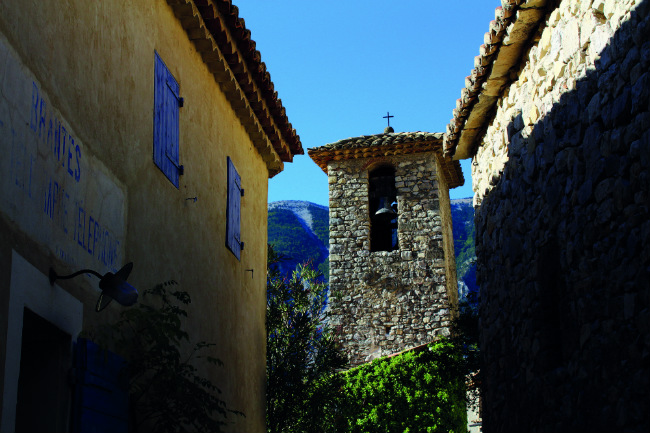
Brantes. Photo SDO
The neighbouring départements of Drôme and Vaucluse, overlooking this playground of the adventurous, are like the wines they have become known for producing: to be enjoyed in a more leisurely fashion. The Cave de Tain co-operative at the foot of the Hermitage hill is just a short drive from Valence’s TGV station on the high-speed Paris-to-Marseille line. This makes it an easily accessible destination from London St Pancras – and the ideal place to begin a laid-back saunter through the countryside to Avignon, taking in the finest local cuisine, wines and leisure activities along the way.
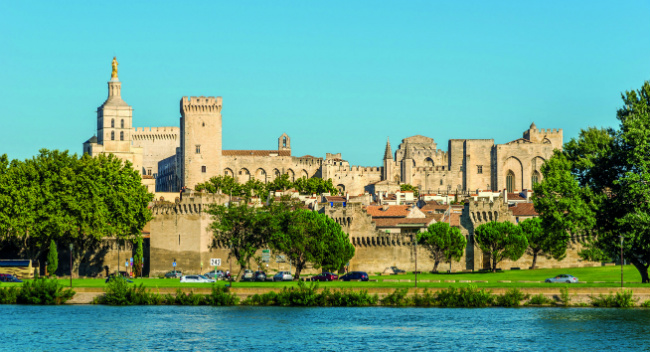
Avignon. Photo: Fotolia
The hillside is seen as the spiritual home of the Syrah grape, and while half the fun is in tasting the wines, it wouldn’t be right to do so without first exploring the appellations. Cave de Tain offers guided tours of the hillside by Segway and electric bike, allowing you to really take it easy, while not missing out on the spectacular views from the top. You will be rewarded with a fantastic tasting back at the Cave.
With your appetite now whetted for what Drôme has to offer, a visit to La Cité du Chocolat Valrhona nearby is an absolute must. This is a chocolate-lover’s dream, having handed out well over 16 tons of samples since opening in 2013. Built on the site of the former factory, which has now moved to the edge of town in order to deal with increased international demand for the Valrhona name, the Cité is home to Europe’s tallest wall of molten chocolate.

La Cité du Chocolat Valrhona. Photo: Lionel Pascale
Following the Rhône a little further south, you’ll come to Valence, the capital of the Drôme département. This lively city has its own international culinary credentials, with a string of Michelin stars to boot. It’s home to Maison Pic – the five-star hotel whose triple Michelin-starred restaurant catapulted the Pic family to international culinary fame and is now in the hands of Anne-Sophie Pic. Restaurant André will take you on a journey into the Pic family cookbook where you can expect to find wholesome dishes on the seasonal menu, such as pan-fried duck foie gras and Marc de l’Hermitage, rib of pork and fig tree leaves, and veal kidneys with Meaux mustard…
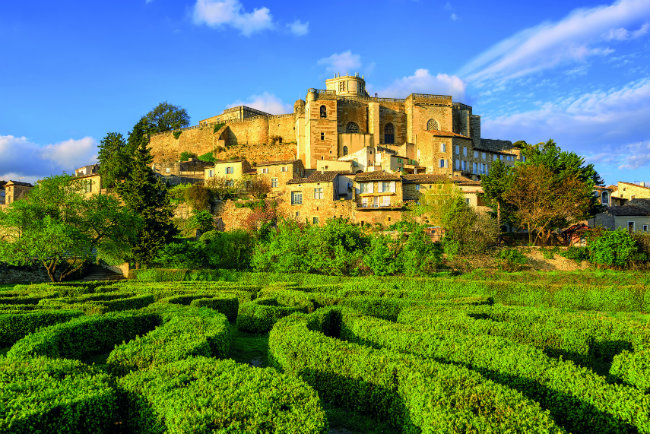
The Renaissance Chateau de Grignan. Photo: Fotolia
CHÂTEAU DE GRIGNAN
“I am going to tell you the most surprising, the most amazing, the most wonderful, the most miraculous, the most triumphant, the most stunning, the most incredible, the most singular, the most extraordinary thing…” wrote the Marquise de Sévigné on December 15, 1670. The prolific letter-writer was announcing the engagement of a lady to be married at the Louvre in what she expected to be a private missive. Her frequent letters to her daughter Françoise-Marguerite, wife of the Count of Grignan, put the magnificent palace of Grignan on the map.
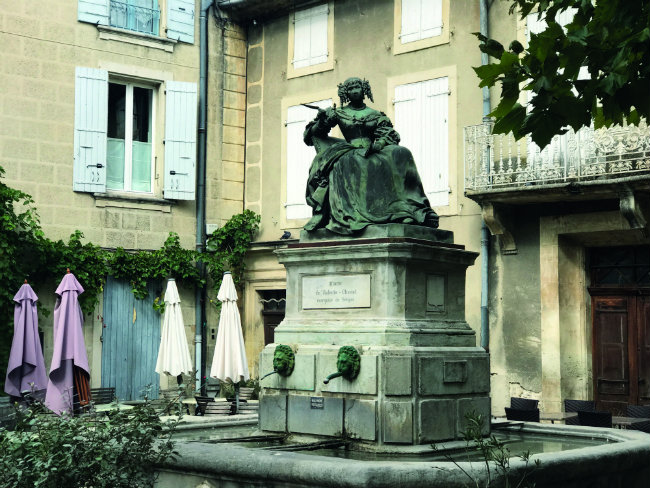
The Marquise de Sévigné. Photo: SDO
Around an hour south of Valence, it is the largest Renaissance pad in southeast France. The story behind the magnificent hilltop château is only matched by the notoriety of societal goings-on of the time, which visitors can experience thanks to the Marquise de Sévigné’s seemingly endless appetite for letter-writing during the reign of Louis XIV. The Château de Grignan has its own story to tell – as everything you see is not initially as it would seem.
It was all but destroyed during the Revolution, with the furniture and items of value looted. It wasn’t until the early part of the 20th century that the then proprietor, Marie Fontaine, began the faithful reconstruction of the château to the marvel that overlooks the village today. Take a gentle walk down from the château into the quaint streets of Grignan and you’ll come across the charming Le Clair de la Plume. This hotel, gourmet restaurant and tea room is a tranquil getaway for those wanting to enjoy their visit at a slower pace, drinking it all in while indulging in gourmet fare whipped up in the kitchen by the talented Julien Allano.
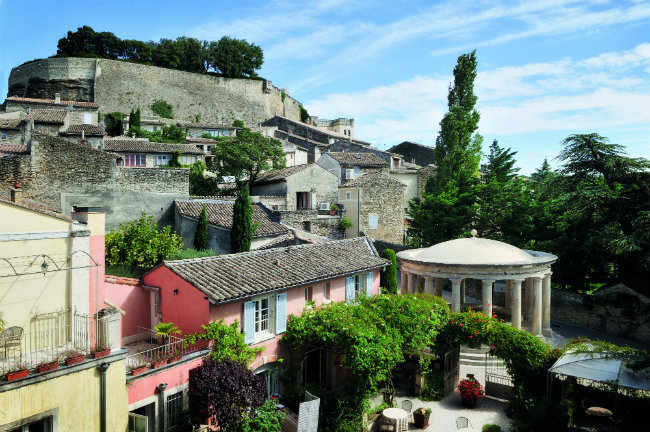
La Clair de la Plume. Photo: Alain Maigre
FLOWER POWER
If the sweeping lavender fields surrounding Grignan pique your interest, then try a visit to the Distillerie Bleu Provence in Nyons. Here you can discover the secrets behind the production of lavender oil. Spoiler alert: a ton of the delicate purple flowers is needed to yield just 10kg of precious essential oil. If you fancy getting practical, you can learn how to become an apprentice perfumer, create lavender soap, or simply relax on the shady terrace and sample some exquisite lavender sorbet.
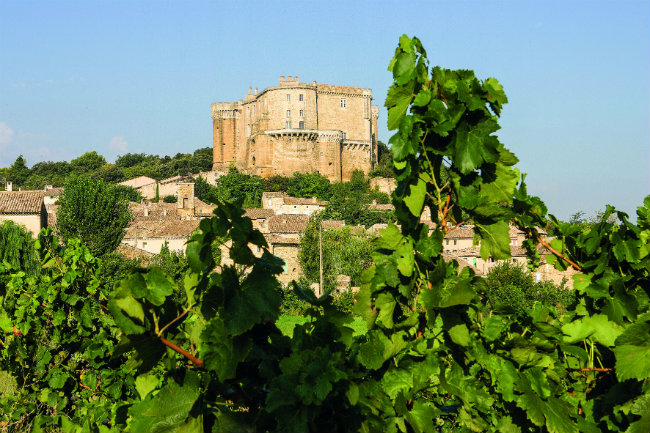
Suze-la-Rousse. Photo: Lionel Pascale
From Nyons, make tracks to Suze-la-Rousse, a medieval hilltop fortress set within a wooded park of Mediterranean trees – and spend some time in the classroom. Now, this may not sound very relaxing, but the château is home to the Université du Vin. Here you will learn the fine art of wine tasting, taking in everything from the vineyards and their geological composition, to how to identify the many different tannins each vintage contains. You will never hold a wine glass or quaff a full-bodied red in the same way again.
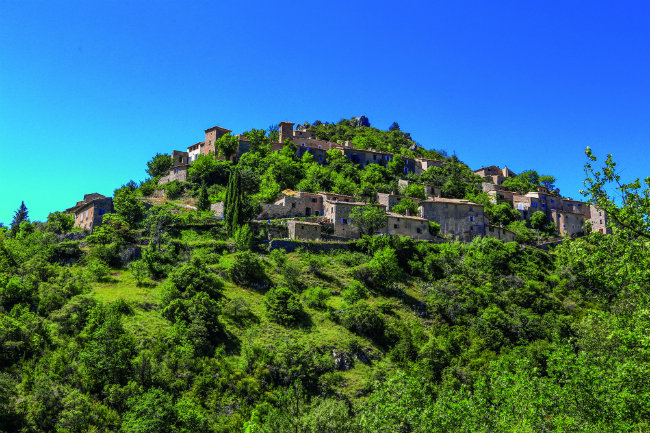
Brantes. Photo Alan Hocquel
Leaving Drôme behind, take the short journey into Vaucluse to the tiny hillside village of Brantes. You can take an extraordinary culinary journey here with “taste adventuresses” Odile Daniel and self-proclaimed “witch” Jacqueline Toumissin, who have made a name for themselves with Les Aventurières du Goût. This hands-on experience sees Jacqueline lead aspiring chefs on a foraging walk around the hillside, gathering all sorts of herbs, leaves and edible plants suitable for a gourmet feast before returning to Odile’s kitchen to cook up all manner of delicious dishes from the freshly gathered ingredients. After the gentle walk up and down the steep incline of the hill, you will certainly have worked up an appetite.
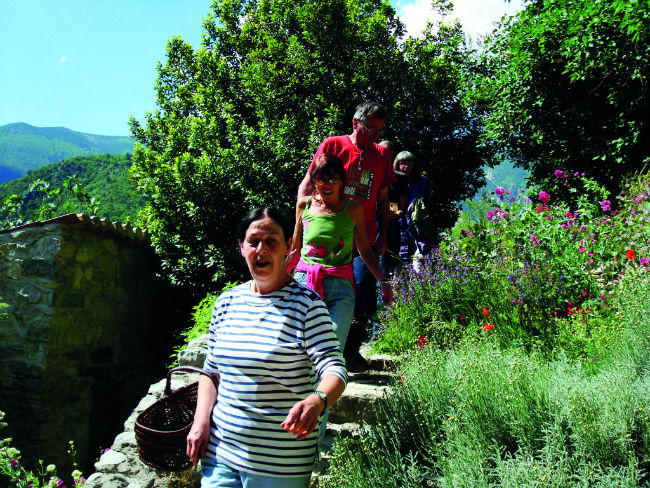
Jacqueline Toumissin leads a group as part of Les Aventurières du Goût
If a morning spent being creative in the kitchen leaves you feeling inspired, then a visit to Huiles & Sens to cook up your own cosmetics will certainly fit the bill – and with a bit of luck you will leave feeling (and looking!) even more youthful than when you entered. The brainchild of Katja Stojetz, Huiles & Sens is home to the MaCosmetoPerso kitchen/laboratory. Here you can learn about the many fascinating properties of essential oils, their health benefits and which ones are most suited to your skin type.
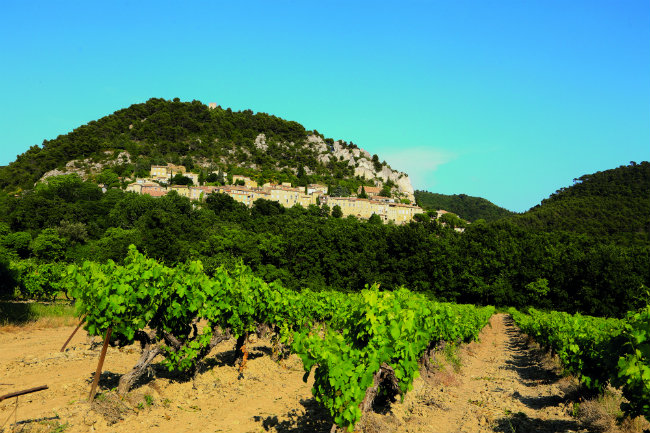
The village of Séguret
By now you will have well and truly earned yourself a drink, and luckily from here it is just a short journey to the vineyard of Domaine de Cabasse, which sits between the picture-perfect villages of Séguret and Sablet. Domaine de Cabasse is made up of five hectares of Côtes du Rhône Villages Sablet, seven hectares of Côtes du Rhône Villages Séguret, and three hectares in Cru Gigondas. Visitors wishing to sample the many varieties of wine produced at this vineyard don’t have to call it a day at sundown as the estate boasts a hotel, where you can enjoy a glass or two of Cabasse’s finest vintages.
Domaine de Cabasse is also an ideal base from which to explore the surrounding countryside, with Ecyclo, a company offering e-biking tours out into the nearby vineyards. Happily, for every pedal push you make, the handy electric motor on the back of the bike propels you even further forward.
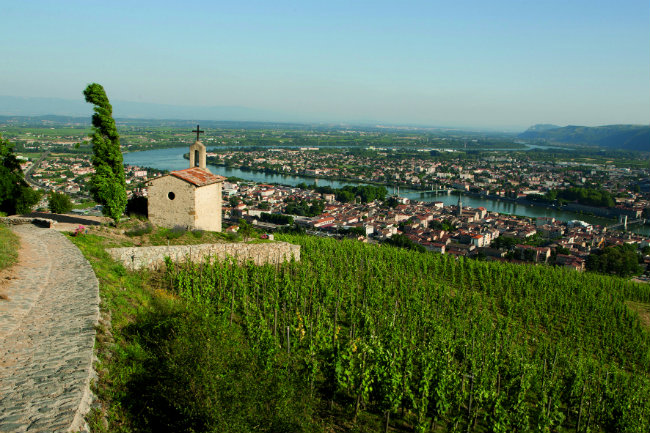
Hermitage overlooking the Rhone River. Photo: Lionel Pascale
A midway stop at Cave de Rasteau, a co-operative made up of 80 families marketing quality wines under the Ortas brand name since 1925, is popular with cyclists. Located a stone’s throw from Vaison-la-Romaine, an area famous for its truffles, olive oil, the mistral and the famous Grenache grape at its heart, the Cave has built its success on the Grenache Noir. Your e-bike may run out of power before getting you back to Calais and on to St Pancras – especially if you can’t choose between your favourites at Domaine de Cabasse and Cave de Rasteau and both saddle bags are bulging with bottles. Luckily, the TGV station at Avignon is just a quick drive away. There’s nothing like a high-speed journey through the countryside to reflect on life at a slower pace.
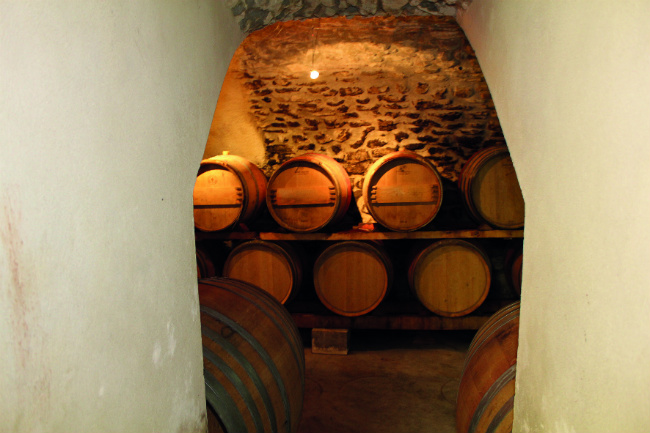
Domaine de Cabasse. Photo: SDO
ESSENTIALS
WHERE TO STAY
Hôtel de France: This four-star experience in Laval offers a great central location should you wish to enjoy a late-night tipple in this charming town of pedestrianised shopping streets and shady terraces.
16 Boulevard Général de Gaulle, 26000 Valence. Tel: +33 (0)4 75 43 00 87
Château de Rochegude: Enjoy the opportunity not just to dine like a king in a castle, but to sleep overnight there too. This 12th-century fortress, which became the summer residence of the Marquis de Rochegude, has been transformed from top to bottom into a luxurious four-star hotel for the modern traveller in search of somewhere special to rest their head – on a canopied bed, naturally.
Place du Colombier, 26790 Rochegude. Tel: +33 (0)4 75 97 21 10
For more information visit www.ladrometourisme.com and www.provenceguide.com or for seamless international rail travel from London St Pancras to the South of France visit www.voyages-sncf.com.
From France Today magazine
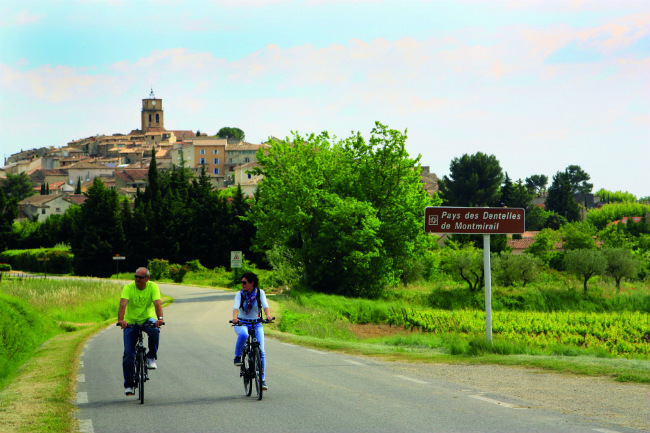
Cycling past Sablet
Share to: Facebook Twitter LinkedIn Email
Leave a reply
Your email address will not be published. Required fields are marked *

